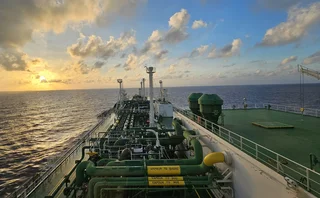Applied risk management series: Venturing beyond VAR
Venturing beyond historical VAR

Value-at-risk and expected tail loss (ETL) are the pre-eminent ways of measuring financial market risk. The three main approaches used to estimate VAR and ETL are variance-covariance (also know as delta-normal, the RiskMetrics variance model, parametric or linear), Monte Carlo simulation and historical simulation (HS).
Many early adopters in the energy markets first implemented the variance-covariance method, primarily due to the issues of computational speed encountered with the other
More on Risk management
LNG trading strategies set to change amid major market shifts
The global LNG market is on the brink of significant changes set to alter trading dynamics and market behaviour, say analysts
Why commodity finance is ripe for stablecoin
Digital currency brings cost efficiencies to financing, but its real benefit to commodity firms lies in making huge pools of new capital available, write Jean-Marc Bonnefous and Ronan Julien
US shutdown leaves commodity traders without key data
Commodity traders are ‘flying blind’ without Commitment of Traders reports
Energy Risk at 30: Learning from the past
Energy Risk looks back at the seminal events and developments that have shaped today’s energy markets
Past disasters can prove the value of energy risk management
Analysing failures and losses at energy firms can underscore the value of consistent, high-quality risk management
How quants shaped the modern energy markets
The business models of today’s utility firms are built on quantitative analysis, but the introduction of these techniques in the 1990s was far from smooth
Interview: Vince Kaminski
Market veteran Vince Kaminski discusses the biggest risks to energy firms today and whether risk teams can ever prove their value
Mounting risk prompts refocus on integrated energy risk management
Energy firms are facing heightened risk due to shifting geopolitics, climate change and the energy transition. As market, credit and enterprise risks ramp up, the need for improved integrated risk management is growing, say risk managers







